Upon entering the Mobile Carnival Museum, guests are greeted with life-size floats made with styrofoam sheets. Multiple rooms feature shiny crowns, trains and costumes dating back to the 1800s, but …
This item is available in full to subscribers.
Please log in to continue |
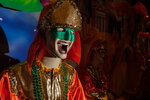

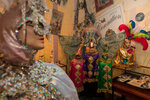


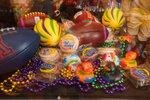
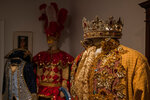

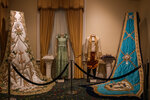
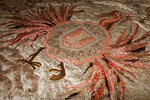

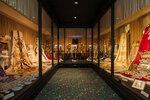
Upon entering the Mobile Carnival Museum, guests are greeted with life-size floats made with styrofoam sheets. Multiple rooms feature shiny crowns, trains and costumes dating back to the 1800s, but every room holds a piece of Alabama Gulf Coast history.
First instances of Mardi Gras
In 1703, Mardi Gras was observed for the first time by residents of the New World by French pioneers at Twenty-Seven Mile Bluff, the first settlement of Mobile.
Eight years later, Carnival was born as residents joined together in song, food and dance. A papier-mâché bull, in honor of Boeuf Gras, which is another name for Mardi Gras, was pulled through the streets of Mobile.
“The first recorded instance of what is defined as a modern-day American Carnival happened on New Year's Eve in 1830,” said Cart Blackwell, the curator of the Mobile Carnival Museum. “You had a group of young men who got together on New Year's Eve, and they were partying, and one of this group of young men was a man named Michael Kraft, and he happened to have a little too much ‘brown water’ and took a nap in the doorway to a hardware store, Partridge Hardware. When he awoke, he was being taunted by some teenage boys and he didn't miss a beat. He grabbed some kettlebells and some rakes and proclaimed himself the chief the Cowbellion de Rakin Society.”
This society was the first parading society in America.
After the founding of the Cowbelion de Rakin Society, Kraft recruited other members. This led to the idea of having a parade and a ball that would have a certain theme.
“The ball, which has tableaus, or theatrical performances, that continue the theme of the parade, is for members and invited guests. Within 10 years of the founding of the Cowbellion De Rakin Society, they were written up in New York papers, Boston, Philadelphia, New Orleans, Montgomery, Selma, I mean small towns to major cities, and they inspired other organizations,” Blackwell said.
Not only did these societies and organizations help spread the word of Mardi Gras, but the Mobile Chamber of Commerce played a role in shedding light on Carnival season.
Blackwell added that the Chamber would hire an artist to work with an organization to create lithographs and lavish depictions of the parades to grab people’s attention.
“For most of those groups, they get their artists to really whip out a beautiful panoramic view of these parades, and then they'd have a writer to work with the theme,” he said. “They might get the list of the floats and then go ‘Gung Ho’ on the writing. These things were published in newspapers and magazines well in advance of Carnival to get people to come down here.”
Two ladies, Louise “Sister” McClure and Elizabeth “Dibber” Lutz, were shopping for throws and saw MoonPies. These treats were not only less expensive than Cracker Jack boxes but were a much safer throw.
“These are women that had children that attended parades. All of the children, probably I'd say underneath age of 15, and they had seen when their children got cut eyes from the Cracker Jack boxes and they remember the experience of it.”
McClure and Lutz were also founding members of the oldest women’s parading society, The Maids of Mirth.
Since these two introduced the MoonPies as parade throws, they have been a common and popular catch at parades.
“Traditionally, Mobile did not accept green,” he said. “The premise behind that is they chose the two colors of purple and gold because they are associated with royalty. Mobile has had a tradition of Carnival royalty going back to the 1870s.”
“We have nine active designers that create the trains,” Blackwell said. “Each of these types of entities pick a monarch in March, April or May, and you start having advance pictures and events happening in November. It is a very limited time period to make the trains, and they (the designers) realize this so it is made between spring and early winter.”
“One of the great themes that we highlight at the museum is the Carnival is an art form. And each one of the trains in particular is unique,” Blackwell said. “There are three things that you generally see on the trains which are the initials of a given monarch, a depiction of a crown and then some form of storytelling. Some of them have three or four narratives to them. They're like tapestry.”
These trains feature jewels, fur, sequin fabric and a variety of other materials to create a mural style train.
Each train can range from 6 feet to 22 feet long. These trains can weigh anywhere from 40 to 80 pounds. To ensure the king and queen can move with the heavy fabric when walking at the ball, a layer of plastic is adhered to the inside of the train and greased to allow movement. Some trains include ball bearings to help them glide across the floor.
“They're not only works of art,” Blackwell said, “They're engineering feats.”
“For several years, Mayor Sandy Stimpson has read an annual proclamation giving the City of New Orleans and other cities that host Mardi Gras permission to host the event. This is because Mobile is the home of the first organized Mardi Gras Parade in the U.S., but this is no requirement to issue this proclamation,” Mobile Deputy Director of Communications Jason Johnson said. “It's just for fun and to celebrate Mobile.”
Mardi Gras officially kicks off Feb. 9 with Fat Tuesday falling on Feb. 13.